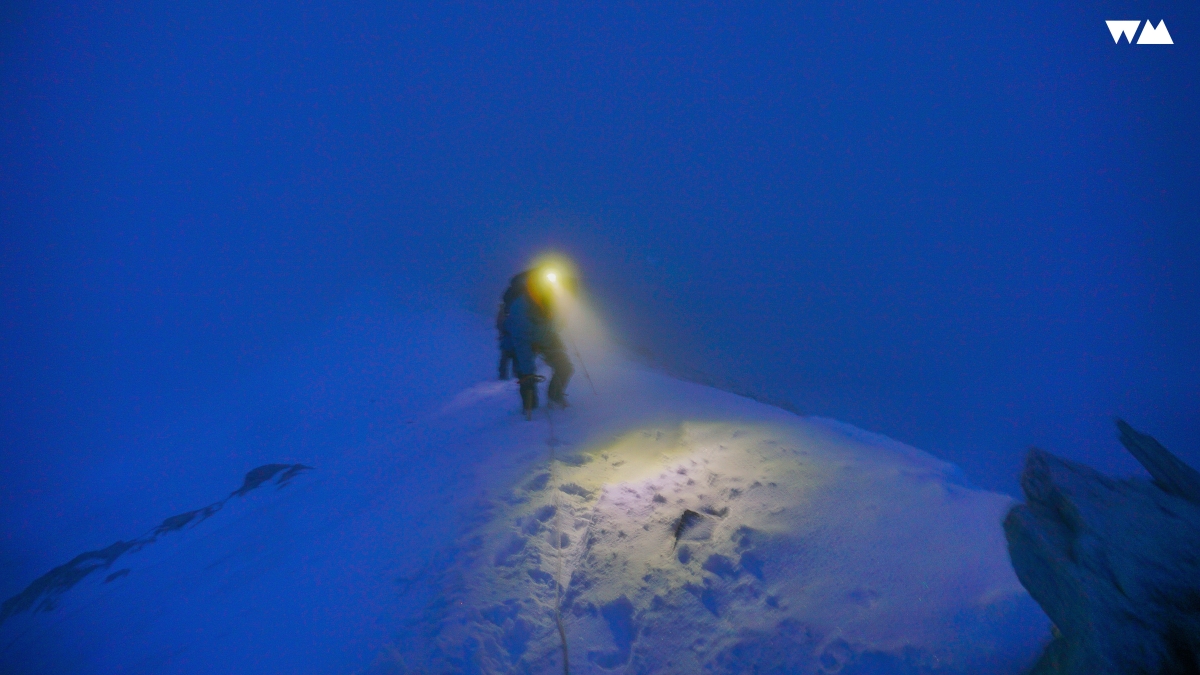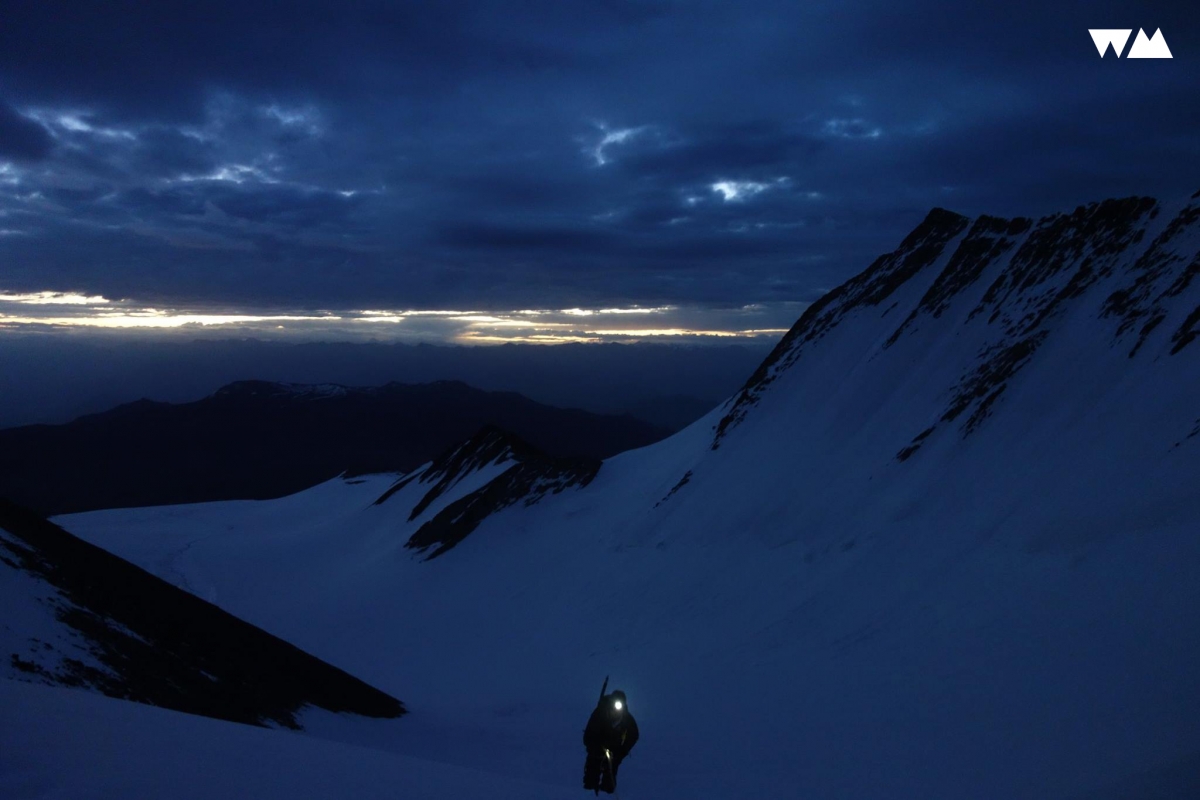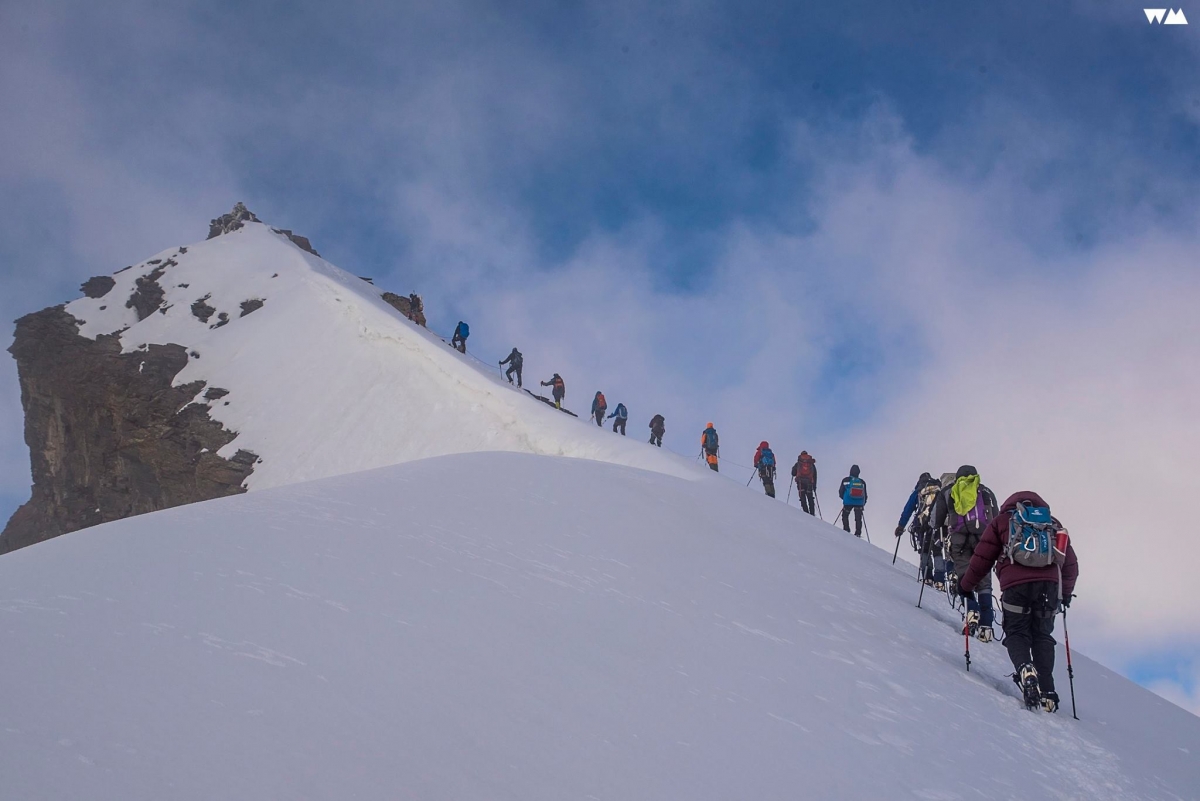WhiteMagic Adventure Blog
Summit day on a climbing trip
Summit day on a climbing trip
"Every mountain top is within reach if you just keep climbing" - Barray Finlay

This is the day you have been visualizing for a long time, the culmination of months of preparation. As summit day approaches, some anxiety inevitably builds up. It feels a bit like appearing for a school exam again.
Although the overall experience of the climb is the most important takeaway, summit day is obviously special. Summit day, or more usually summit night, works differently and that’s exactly what makes it special.
In a break from standard practice, you head out from camp at night, anywhere between 10pm to 4am, depending on how long the climb is, & the snow and weather conditions. It is important to leave at night because the snow and ice conditions are more favorable then. When the sun comes up, the snow starts to get softer, making the climb harder and unsafe. The aim is to be safely back at summit camp by afternoon, avoiding the possibility of avalanches.
Every climb is unique. The guides will assess the conditions both of the mountain and of the climbers, and then make a plan for getting to the summit, which is discussed in detail with you all. Be sure you understand all the ins and outs of the plan, and ask as many questions as you need to.
THE START :
On summit night, you eat an early dinner, and then try to get some time sleep. Realistically, it can be hard to sleep as you are sleeping earlier than normal, and anxiety is at its highest level. It’s best to organize yourself in the evening, and have your climbing kit and rucksack ready before you go to sleep.
You are woken up a couple of hours before leaving, and a hot drink and some biscuits are served. Just remember that it takes a lot longer to get ready at altitude, in cold conditions, and in the dark, so be sure to factor in enough time.
You need to see how many layers to wear, so poke your nose out of your tent and check. Typically, for your summit attempt, all your layers will come into play. If it’s not too cold, you might keep your down jacket or shell jacket in your backpack. On the climb, toes are the first to go numb with cold, and are completely inaccessible, since you cannot take off your crampons, gaiters and boots on an icy slope. So it is highly important to wear woolen socks (a couple of pairs, if it is really cold) and keep them warm. Err on the side of wearing more than less. It’s better to have sweaty toes than frozen ones.
And don’t forget to pack your sunglasses, sunscreen and sun hat for the day.

CLIMBING AT NIGHT :
Climbing at night is a very different experience. One of the guides leads and you followwalking in darkness, guided by the light of your headlamp. It is hard to get your orientation, and there is no perspective. Try and get into a meditative rhythm and not think too much about the summit. The conditions can make the climb tough, you may well be cold, tired, sleepy, and might even think about giving up and turning back to the comfort of your sleeping bag. It is at moments like this that you have to be mentally strong and keep pushing.
DAY BREAK & SUMMIT :
The first light of the day over the horizon brings some warmth and a whole host of positive feelings. It is one of the most spectacular experiences on your summit attempt, sometimes even better than the summit itself. Those magical first rays of the sun hitting the tallest peaks around you, and the realization of how far high you have climbedis something to cherish. Most summits happen between 6am to 9am, after which the conditions change and you start heading back down to summit camp. It is important to listen to the guide’s instructions & follow them throughout.
After a brief time on the summit & the customary photo session, you head back down with as much focus & caution as on the way up. You reach camp during the day, eat and have a well-deserved snooze!

FOOD & WATER :
On cold nights water freezes very quickly, so you need insulation for your bottle ora thermos flask. Adding electrolytes to the water is a good idea.
Carry some high energy food like power bars, gels, dates, nuts etc., for the summit attempt - snacks that you actively like. Try and avoid items which can become very hard when cold.
BAD WEATHER :
Although we all hope for good weather to summit,you need to realise that things could be completely different in bad weather. You could be climbing in a blizzard. You could be extremely cold throughout. You could get no time to eat or drink, as constant movement is the only thing that can keep you warm. But never forget that our thresholds lie far beyond what we think, and you have to keep pushing endlessly.
Sometimes continuing to climb becomes a safety issue – the conditions might not be favourable or the summit might be too far away to get to safely. The guides take the call and you could be asked to turn around without summiting.
As the famous mountaineer Ed Veisturs said - “Getting to the top is optional. Getting down is mandatory.”
Moments like this test one’s real strength, which lies in accepting the fact that you could not get to summit. So, it is vital not to be too obsessed about getting to the summit. Always remember that it is the effort and the whole experience that matter, not just that of standing at a point for a some moments.
Happy climbing!
- Watch glimpses of a typical summit day experience on Kang Yatze - II in this video made by our good friend Vipin Mishra.

Add new comment